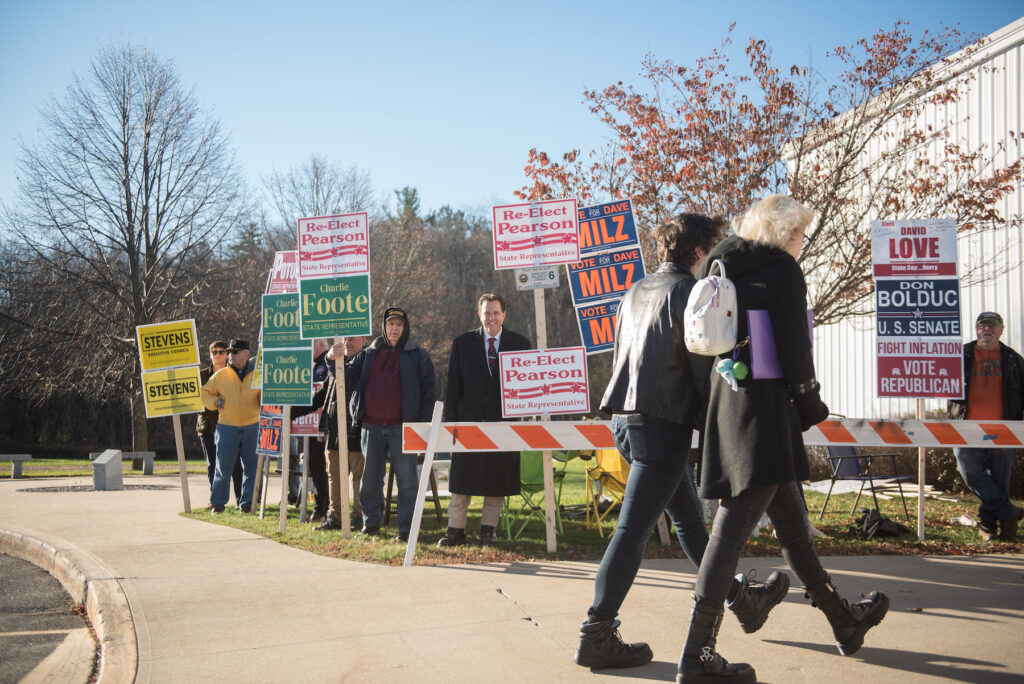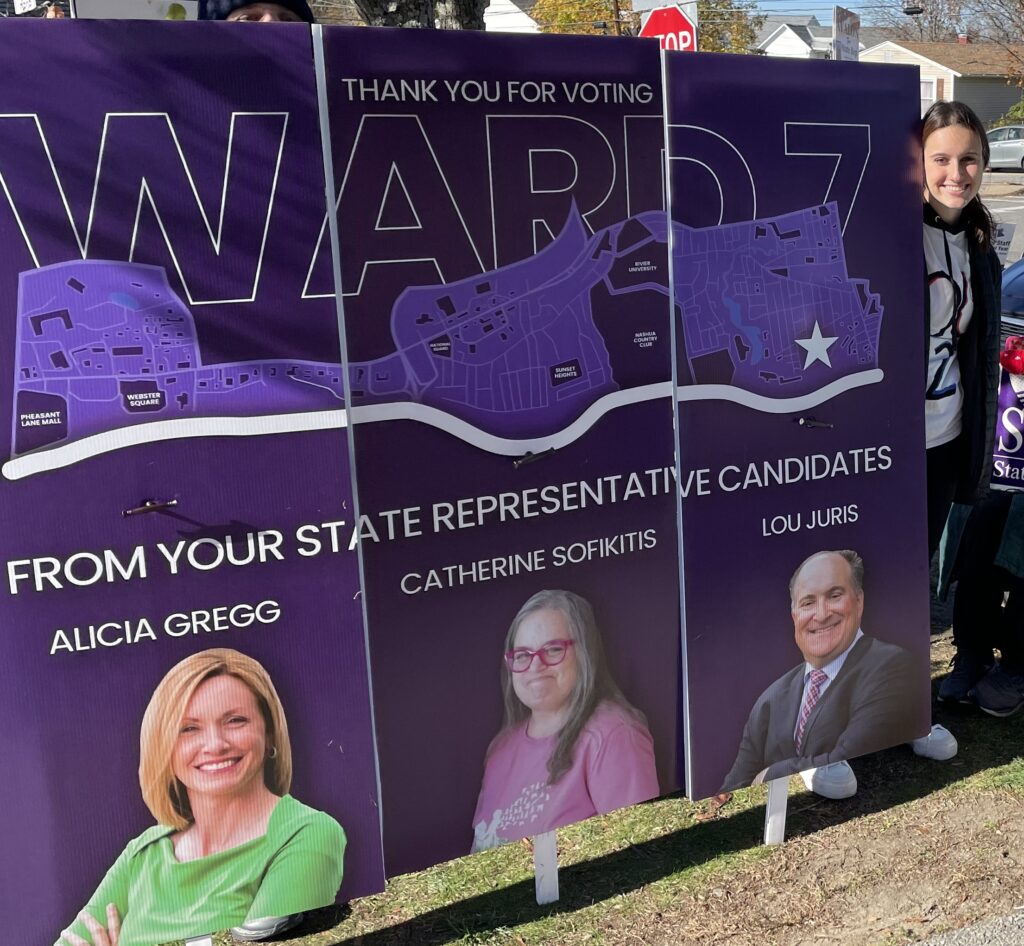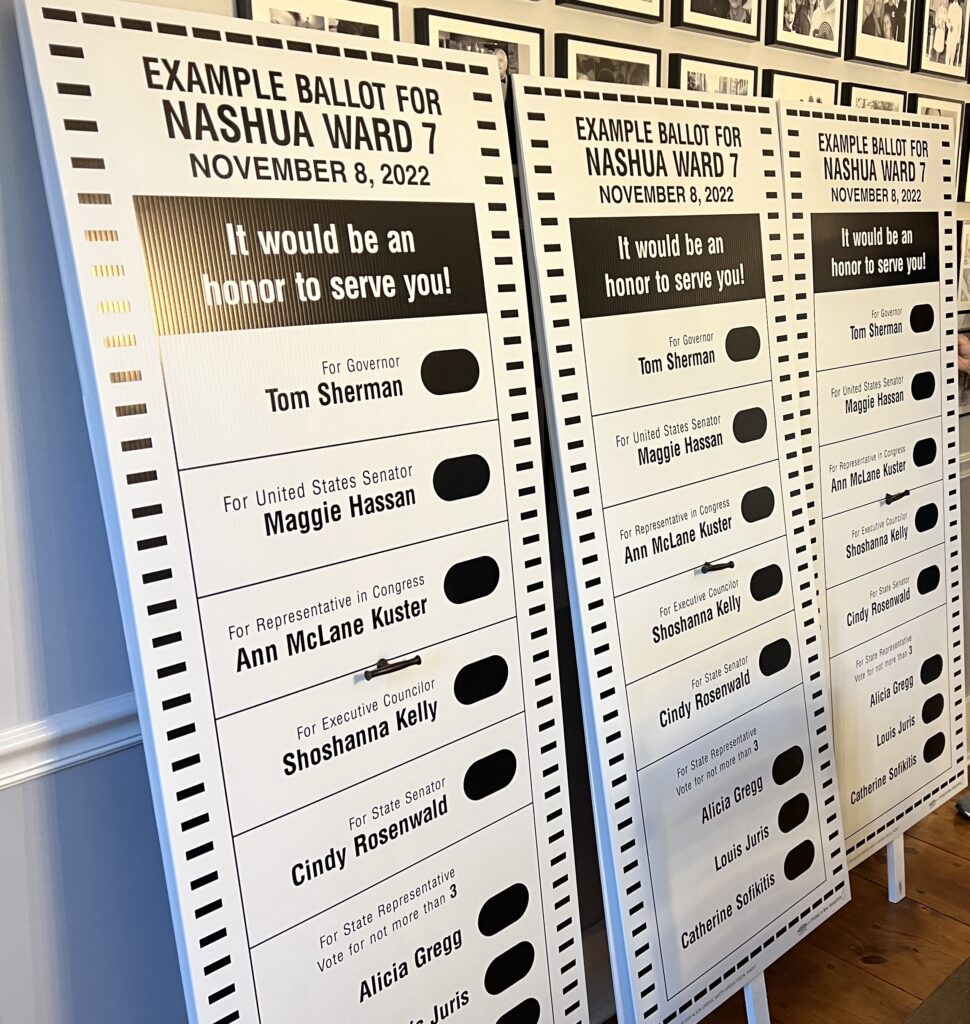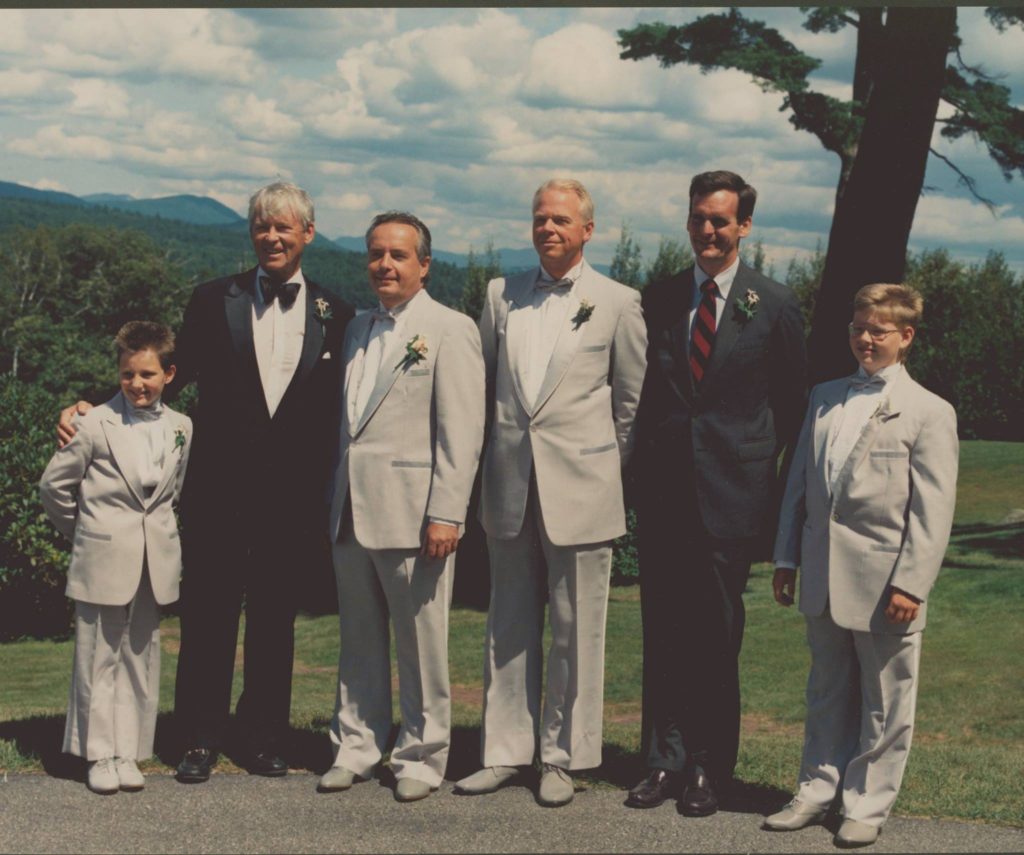With all the millions of dollars invested by parties and campaigns leading up to the election, it’s shocking that the Election Day experience is devoid of experience design for what voters must go through. In short, the Election Day experience for voters just outside the polling place is terrible.
It’s something I’ve always found fascinating. Voters show up to the polls and see people they may/may not know holding signs they may/may not have seen before with names of people they don’t know anything about. I’ve talked about the polling place experience as “visual chaos.”

Kate Brindley Photography www.katebrindleyphotography.com
The prevailing opinion as to why campaigns and parties make and display totems (the multiple signs stacked on top of each other on a wooden post) is traditionally because:
- It’s widely accepted that having support at the polls will influence a voter to vote for whoever is on the sign the supporter is holding. It follows the logic of making signs and putting them all over the place, and it’s a last-minute attempt to sway a voter into voting for that individual or set of individuals.
- If you stack two or three signs on top of each other, you will put candidates who are running for lesser known positions (i.e., “down ballot candidates”) with other more high profile candidates to associate them with the same approach to governing. It’s thought that this can “elevate” that candidate’s profile and garner them more votes.
There are many major challenges with this thinking:
- You’re not taking into account anything about the voter (what kind of day they’re having, where their headspace is at). You are simply asking them to perform something.
- It assumes that many voters respond positively to these signs, when we have seen that most voters go out of their way to avoid the locations where people and signs are.
- Many voters see supporters and those involved in political support as “extreme.”
- You are assuming that the voter has any clue who any of the people are on your totem. If it’s a presidential year, or a mayoral race, they may know the top people on the ballot, but the farther you go down the ballot, the more unknown people are.
- Voting is a private matter between the voter and the vote. Asking for votes the day of the election can be seen as an extreme turnoff or a harassment tactic, especially to those who want to maintain their privacy.
These emotional and rational reasons are important to take into consideration for all of us as we struggle to convince Americans to stay engaged in our political system. We need the polls to be welcoming, less frenzied, and pleasant. We need to project a relaxed environment for all voters as they make some pretty important decisions for our towns, cities, states and federal governments.
In some towns, they were handing out water bottles to those people who were waiting in line for hours to vote. While that seems like a nice thing to do, it can also be seen as an attempt to “buy” a vote. What experience should political campaigns and parties be striving to create a successful outcome? Here are five tips:
Drop ALL the attacks and smears.
If a campaign is still attacking their opponent on the day of the Election and is bringing signs out to do so, the message you send to many voters is that you don’t care about what they’re going through that particular day. You need to be able to shift your attention away from grievance politics and focus on the time voters are taking out of their day to show up at the polls.
Thank voters for their time and try to establish a small personal connection.
While I’ve seen many people in polling places thank others for coming out, many of the folks who hold signs remain silent and let their yard sign totems do the talking. I’ve also noticed that when someone is LEAVING the polls, most responses shift from thanking voters to “So who did you vote for?” leaving a voter in what could be an awkward position for them. Find ways to focus on thanking them. They may even vote for your person next time because of the way you made them feel.
Re-think why your supporters are out there and how they can help you.
I’m going to ask every candidate who’s in charge of a campaign: does having a sign out there with your name on it really add to your voting day totals? Voters come in knowing who they’re going to vote for at the very top of the ballot. I always laugh when I see people with Trump or Biden signs out there at the polls (as if that will dramatically impact the amount of votes they were going to get that day). Having a supporter out there should be a reflection of who you are and who you want to be. What can you do to arm them with the training and tools that will leave a lasting impression on a voter? Supporters should be removing the chaos from the voter AND simplifying things for them.
Leaders need to lead. Support your lesser known candidates and teams.
This is probably the most important thing to note: Up to 40% of voters don’t know who their party’s down ballot candidates are (i.e., the candidates running for lesser known positions who are being supported by their parties). The entire system of politics gravitates towards the more powerful positions, and leaves the lesser positions within town and municipal government with less resources and money. If your campaign team simply focuses on getting the top position filled and none of your team members (for example, a laser focus on Mayor and none on your Board of Aldermen), even if you fill the top position, you won’t be able to assert any change once that person gets elected.
What could a new experience look like?
In Nashua, I’m experimenting with a brand new design experience at the polls, taking all of the removing the totems where we can and finding new types of messaging for our voters. I created a “triplicate” last election that looked like this:

Two important things to mention about this design: first, it had a huge map of the ward which allowed people to say “hey, that’s where I live!” and point to a section of the sign. Then it associated a really important message with the three candidates (who were in lesser known positions, but very important state legislators): “Thank you for voting.” The voters were drawn in by the design of the sign, then they would smile based on the message, which was VERY different from the typical “VOTE FOR OUR CANDIDATE” messaging that you see prevalent everywhere.
That was great for these three people (who subsequently won their elections and got more votes than people farther up the ballot), but what about the rest of the people running? The back of each was designed to give a bit more information about who was part of the larger team:

Did everyone on this ballot get elected? No(though most did). We have a Republican governor who has a great deal of cross-appeal in New Hampshire. Sometimes, it’s the lasting impression you have on people that help you carry a message to win another day. It was a great way to give voters a personal touch on the day of the election, making it more welcoming for them and easier for candidates to connect. I’m proud to say that these signs addressed all of the five points above, welcomed voters into our polling places, and thanked them for the time they spent there, even if they didn’t vote the way we wanted them to.
I’m making modifications to signs for the upcoming municipal elections (version 2.0), and I will keep everyone posted!

